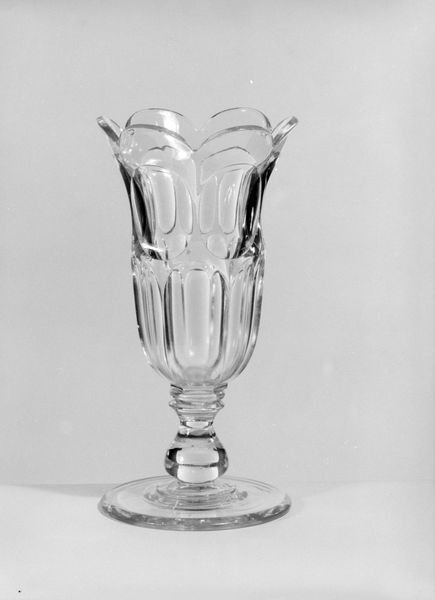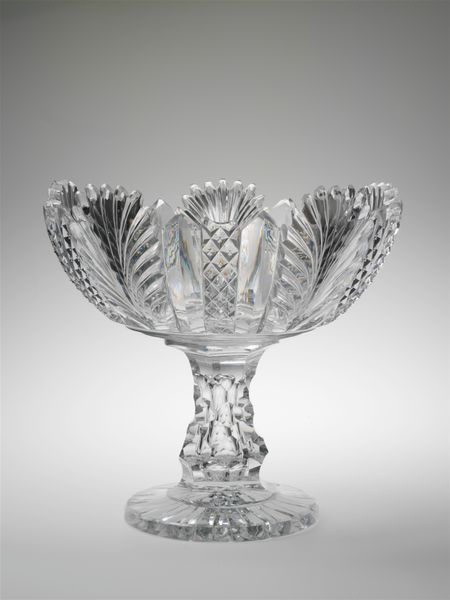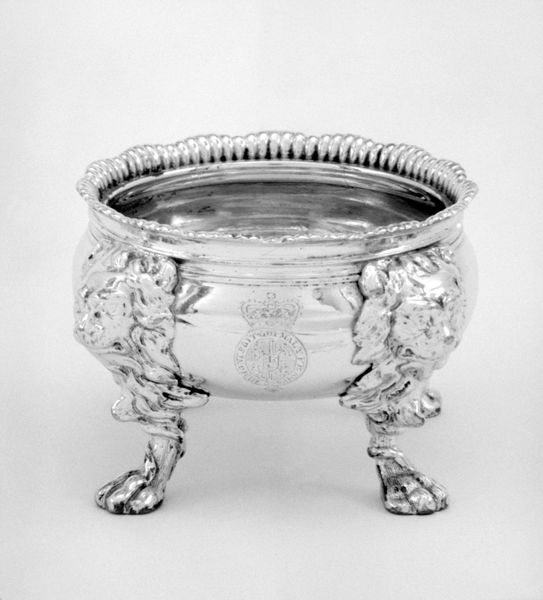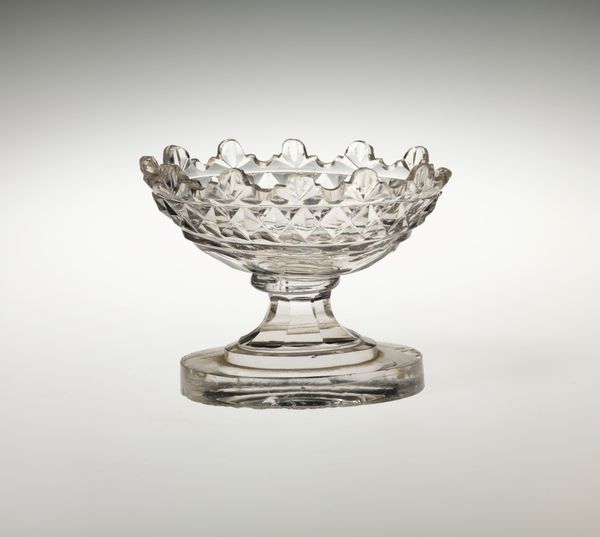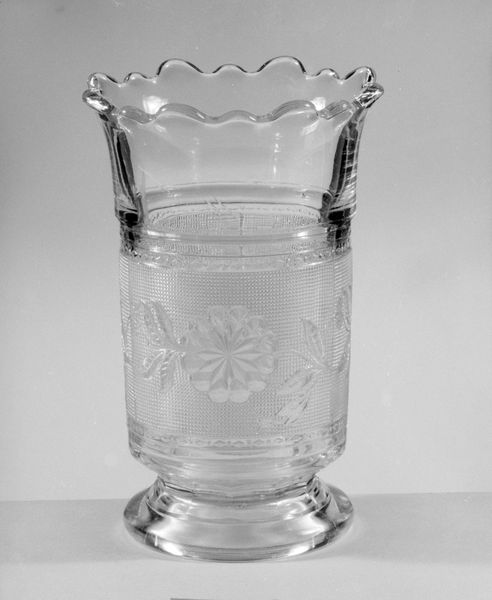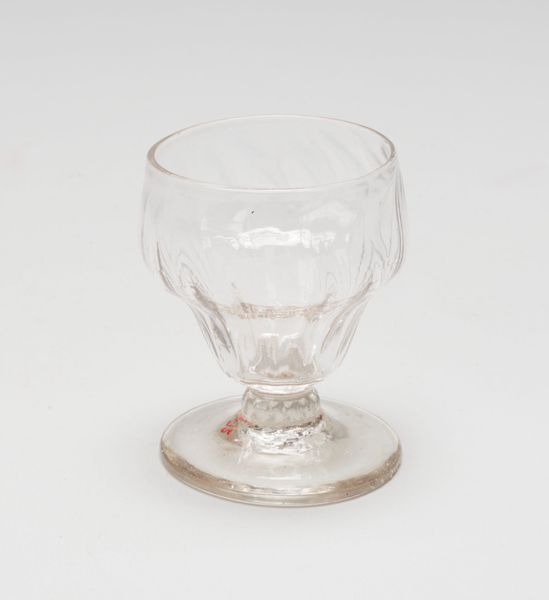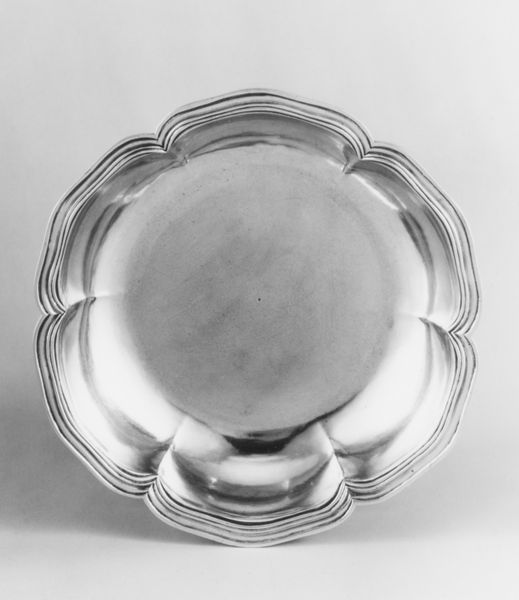
glass, sculpture
#
glass
#
geometric
#
sculpture
#
decorative-art
Dimensions: H. 3 3/4 in. (9.5 cm)
Copyright: Public Domain
Editor: This saltcellar, crafted by the Mount Washington Glass Company between 1890 and 1893, is a fascinating little sculpture made of glass, and it looks so delicate. With its geometric cuts, it looks very precious, a simple container turned into something quite beautiful. How would you interpret its significance? Curator: The first thing that strikes me is its materiality. Glass production in the late 19th century involved complex labor practices. We must consider the skilled glassblowers, cutters, and polishers who shaped this object. This object wasn’t merely decorative; it participated in a burgeoning culture of consumption. Salt, once a precious commodity, became increasingly accessible due to industrial production and distribution networks. What does it tell us about society's changing relationship to value? Editor: That's a great point! Thinking about the laborers really makes me look at it in a new light, recognizing the skill involved in making all of those precisely cut facets. So, you're saying its value is tied not only to the material, but also to the labor, industrialization, and broader shifts in society at the time? Curator: Precisely! We can analyze its form as a product of specific tools, techniques, and economies. Consider how technological advancements made intricate glass cutting more efficient. These saltcellars entered middle-class homes, signaling a desire for affordable luxury. By examining these aspects, we uncover a complex network of production and consumption shaping everyday objects like this one. It challenges the typical definition of ‘art’, by focusing on material reality. Editor: I see it differently now. What I previously saw as just "decorative art," I now see as a convergence of industry, labor, and societal values, all reflected in this small, glass object. Curator: Exactly. It's about unraveling the relationships embedded within the object itself. We’re excavating those often invisible structures of production and consumption.
Comments
No comments
Be the first to comment and join the conversation on the ultimate creative platform.
